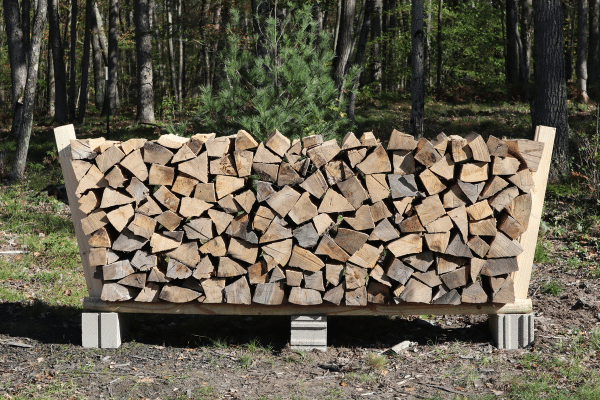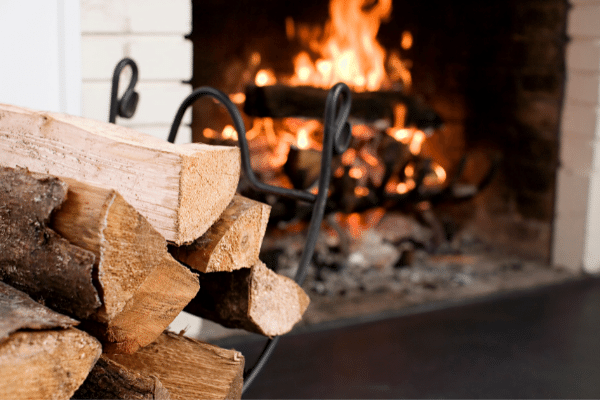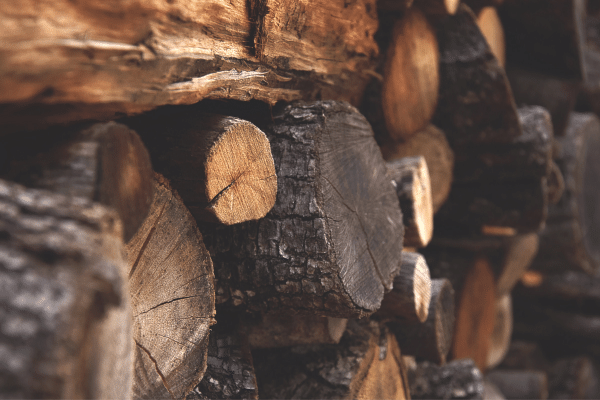- Home
- Types Of Firewood
- Is Poplar Good Firewood
Is Poplar Good Firewood?
This post may contain affiliate links so I earn a commission.
Is poplar good firewood?
That is a question that's not easily answered.
When it comes to firewood, all trees are not created equal.
While all wood can be burned to produce heat, there are a number of variables that make some wood better suited for your fireplace or wood stove than others.
The biggest variable is the species of wood that you chose.
One species of wood that is quite common in North America is poplar, an umbrella term that includes trees such as white poplar, aspen, black poplar, Lombardy poplar, cottonwood, and eastern poplar.
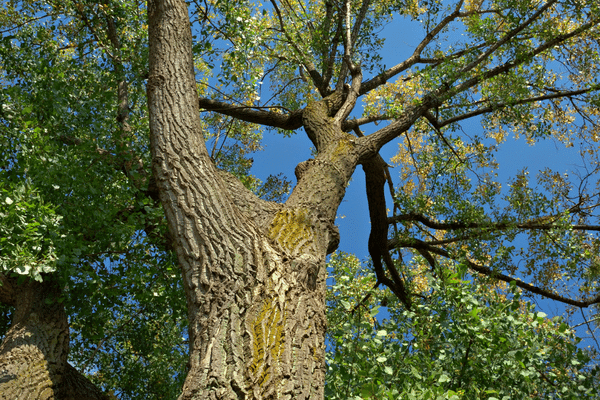
But is a tree’s abundance the best indicator of a good firewood?
In the case of poplars, probably not.
About The Poplar Tree
The different species of poplar trees are found across the temperate climates of North America, Canada, and other parts of the Northern Hemisphere.
There are more than thirty different species of poplars.
Compared to other varieties of trees, poplars grow quickly and have a much shorter lifespan.
Depending on the variety, a poplar tree may grow to between 50 and 150 feet in height.
Trunk diameter can exceed eight feet.
The bark of some poplar trees features a cross-like pattern.
Most poplar species have light brown or light gray bark.
What Are Poplar Trees Used For?
Poplar trees are popular with homeowners and landscapers who want to create a privacy screen or a windbreak and don’t want to wait decades for other hardwood trees to reach the desired height.
The fast-growing poplars can get the job done in just a few years.
Additionally, the trees are quite pretty, making them an asset to any yard.
Understandably, since the poplar trees grow at a faster rate than other trees, the wood that is produced is softer and less dense than that of slower-growing hardwood trees, like oak and cherry.
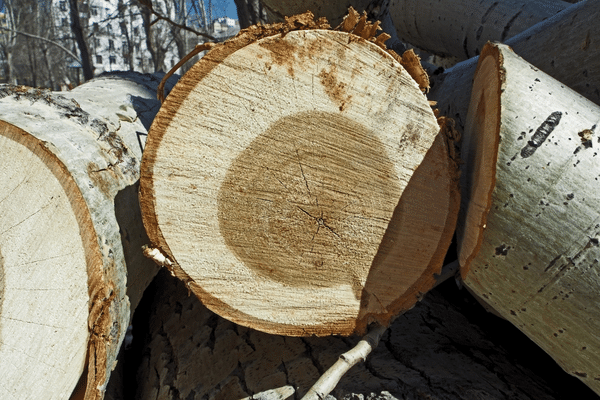
The pulp of poplar wood is commonly used to manufacture
paper and cardboard, as well as pallets, plywood, and crates.
Poplar wood is also commonly used in veneer products.
As a flexible and lightweight wood, poplar has also found its way into manufacturing facilities making snowboards, skis, and boats.
As firewood, poplar has some merits, as well as some drawbacks.
If you ask one person, they may tell you that the virtues of poplar outweigh the drawbacks, but another person may tell you that poplar is not worth the effort it takes to cut it.
Let's look at some of the pros and cons of using poplar as firewood.
Is
Poplar Good Firewood - The Benefits
As a less dense wood, poplar is easy to cut.
The wood grain also grows rather straight, so the chainsaw goes through poplar with ease.
It is possible to cut and split a load of poplar in half the time that it would take to cut a load of cherry or ash.
Not only that, but cutting poplar is less demanding of chainsaws and the human body.
You won’t feel quite so beat up after an afternoon cutting poplar.
Poplar, in general, dries out and is fully seasoned more quickly than denser firewood.
A stacked cord of oak, for example, can take up to two years to season.
Comparatively, poplar may be ready to burn in just six months.
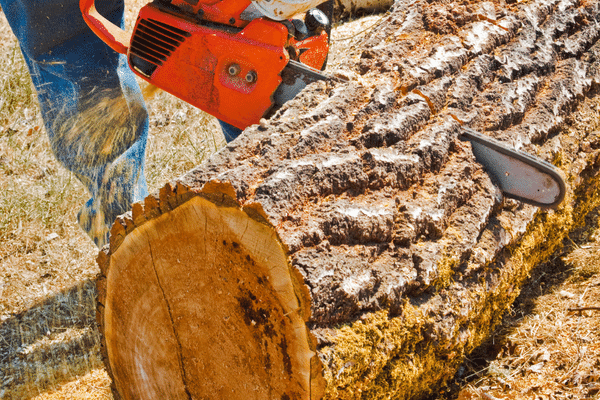
The pulpy wood
of poplar can retain moisture like a sponge, but it also has enough air pockets
to promote airflow that can dry it out in a fraction of the time.
When well-seasoned, poplar catches fire quickly and easily.
The wood is light and pulpy, so it is tinder-like.
If you recall for a few paragraphs up, poplar cuts and splits easily.
It also ignites easily.
You can split poplar into small, thin pieces and use it as kindling.
Toss a small piece of poplar on your bed of coals in the morning to help get your fire started again.
Poplar is not a particularly sappy wood.
In fact, it doesn’t contain much sap at all.
Because of that, a poplar fire will give you a decreased risk of creosote build-up that what you would find when you burn sappier wood, like pines.
Don’t let that lull you into a false sense of security.
You should still have your fireplace chimney cleaned and inspected on a regular basis.
Is Poplar Good Firewood - The Drawbacks
BTU, which is short for British Thermal Unit, is the measurement of heat output in firewood.
Dense hardwoods like oak, cherry, and hickory, woods that are traditionally known for being quality firewood, have higher BTUs than softer hardwood trees and pines.
White oak, for example, has a BTU rating of 26.4, ash is rated at 23.6 BTUs, and hickory has a 27.7 BTU rating.
Poplar trees are much lower on the BTU chart as the wood is lightweight and soft.
White poplar has a 15.9 BTU, aspen has an 18.2 BTU, and cottonwood’s BTU rating is 15.8.
What this means for homeowners who heat with wood is that a log of oak or hickory will produce a longer, hotter fire than a comparable size log of poplar.
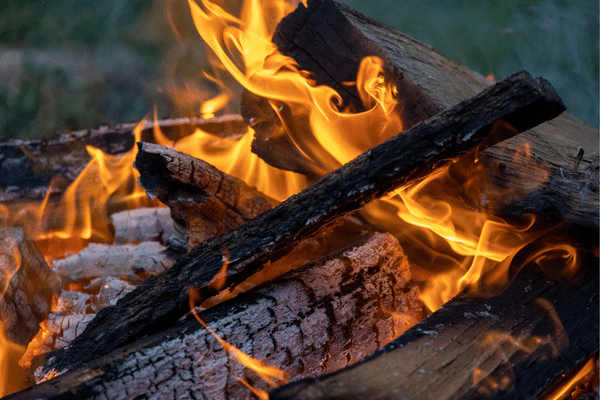
There is less bulk in a log of poplar, therefore it burns out quickly.
Burning exclusively with poplar means that you will be feeding your fire more often than you would if you burn a harder, denser wood.
Although we are listing this as a “con”, there is a time and place for using a fast-burning firewood.
For example, if you are camping and you want a quick fire in the morning to fry an egg or brew a pot of coffee before you pack up, you will want to use a fast-burning wood like poplar.
However, air pockets in the poplar wood heat up when it is burned which produces popping sounds, like mini explosions.
The pops can be dangerous if sparks fly around.
They can burn you as you stoke the fire or create a fire risk if the spark jumps out onto your floor or nearby furniture.
It is safer to burn poplar in a contained area, like a wood burning stove or an outdoor wood burning furnace.
Poplar burns so fast that it doesn’t produce a nice, hot bed of coals like other types of firewood.
Once the poplar wood burns out, you are left with a pile of ashes and no lingering heat.
The fire is hot, but short lived.
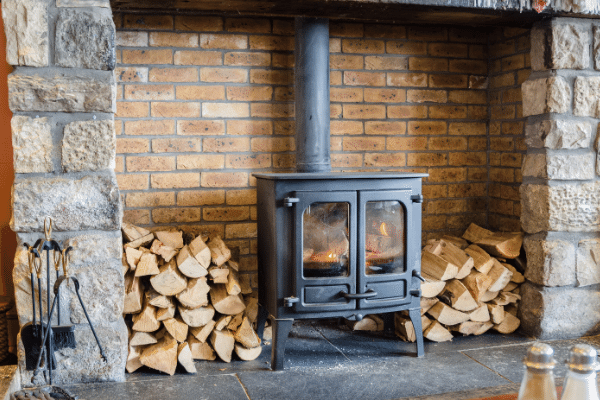
Many
types of poplar give off a lot of smoke, making it a less desirable firewood.
The smoke is quite stinky too.
It does not have the pleasant scent that some wood have when it is burned.
The odor of the poplar smoke tends to linger on your clothing, as well as on your furniture, carpeting, and curtains.
If that wasn’t bad enough, poplar smoke, especially in high amounts, can also be toxic to humans and pets, particularly for people who already have respiratory issues, such as asthma.
If someone in your family has medical concerns, you may want to avoid burning poplar.
If you opt to burn it, watch for signs of toxicity and health problems in the people and animals you share your home with.
Is Poplar Good Firewood - Overall
So, is poplar good firewood?
Well, it is not the best type of firewood you could burn.
It will not give you a hot, long-lasting fire with a good bed of coals and a pleasant aroma.
However, poplar wood is easy to cut, seasons in a short amount of time, and ignites well.
Certainly, if you have an abundance of poplar trees in your woodlot, you might as well take advantage of the free firewood and add it to your stack of wood.
Mixing pieces of poplar with other, denser hardwoods is a good way to efficiently use it.
You could split it into kindling or reserve it for your campfires.
Poplar may have its drawbacks, but it works well in some applications.
